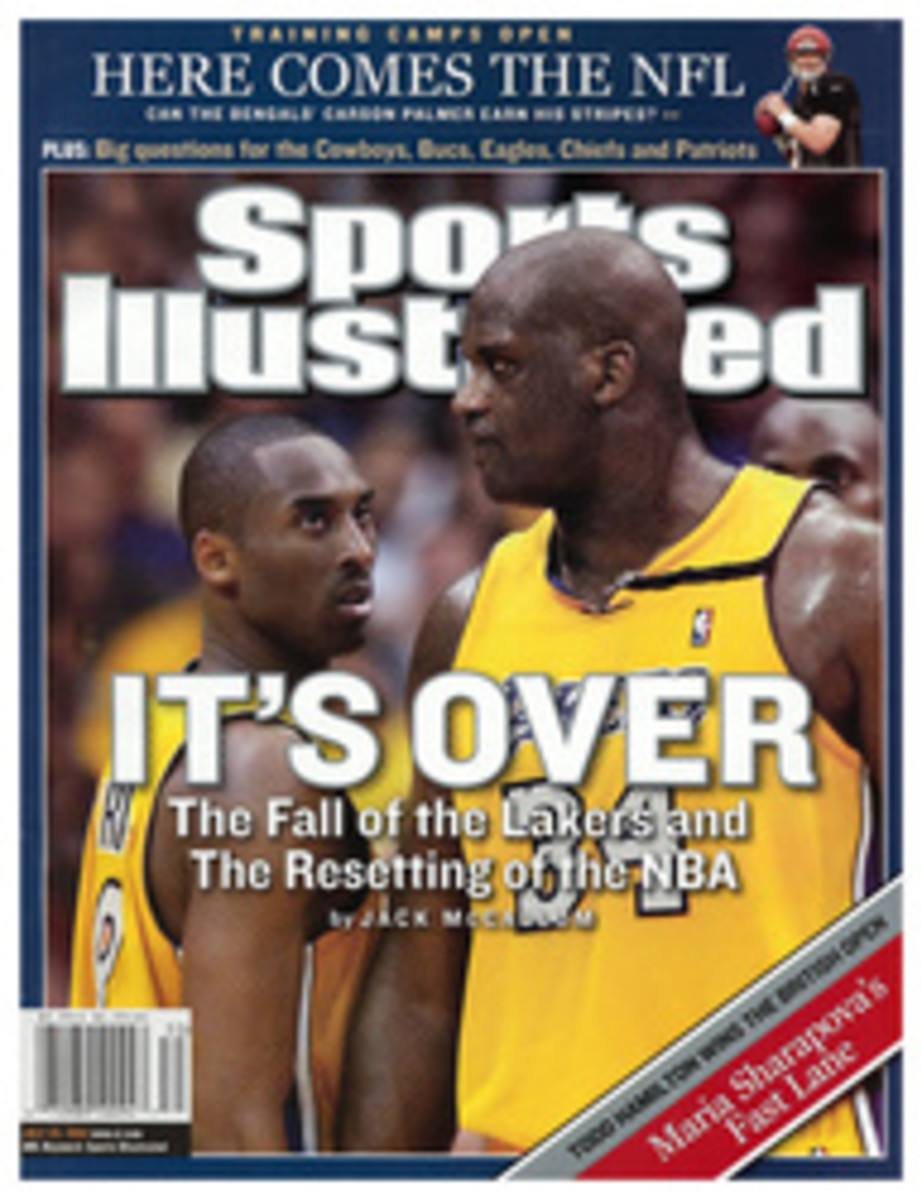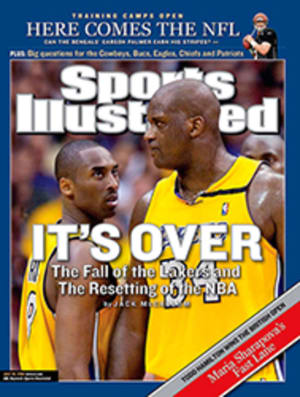
Tally Ho With skill, poise and a few subtle tricks, a first-time scoreboard carrier makes history at Royal Troon
Breaking records at the British Open is something you dream about,
but not in my wildest dreams would I have imagined breaking the
record that fell to me at Royal Troon last week. At 55 years and
183 days I became the oldest person to carry a scoreboard at the
Open. ¶ Scoreboard carrying is a young man's game, a fact
confirmed by a glance at my fresh-faced colleagues at the
briefing session held to acquaint us with the finer points
of the art of humping a scoreboard around a golf course. For
example, when walking down the fairway, the board should be
aligned so that spectators on both sides can read the scores. And
you need to change the numbers as you leave the green so that
clicking in new ones doesn't disturb players as they drive off
the next tee.
Then there is the protocol. Just as the rule in Britain is that
you don't speak to royalty unless you are spoken to, so it is at
Royal Troon that scoreboard carriers don't initiate conversations
with golfers.
The first-round ballot that determines which carrier goes with
which group was not kind to me. I'd heard of Raphael Jacquelin of
France, but his British playing partners--Simon Wakefield and Ben
Willman--were unknowns who had made it through qualifying. (To be
fair, I don't suppose they had heard of me, either.) Kitted out
with white overalls, official black ROYAL TROON OPEN CHAMPIONSHIP
cap, scoreboard, holster, blue pouch and a set of red and blue
numbers from zero to nine, I climbed up to the 1st tee. For a
hacker like me, it was a moment to savor. Though more than a
little nervous, I was comforted that I wouldn't have to hit a
ball.
However, I soon had to get to work as a bogey by Willman at the
1st obliged me to fumble through my pouch for a matching pair of
blue 1s to go on either side of the board. As if that weren't
enough, I had to dig out a couple of blue plus signs as well.
(Blue indicates over par.)
There was more work to do on 2 when Jacquelin found a bunker off
the tee and joined Willman in blue figures. I had a respite at
the 3rd when all three players made par, and three pars
immediately became my preferred outcome on every hole. Though I
was developing an empathy for the players, I felt mixed emotions
when they stood over birdie putts: I was keen for them to do
well, but it was such a chore to change the numbers that I was
not altogether sorry to see a miss.
Meanwhile, I was getting to know the rest of what might be called
the support team. Miguel from Madrid was our rules
official--smartly dressed in a blazer and tie, yet informal and
friendly. Our scorer, Zena, was a local lady who recorded every
shot, first on a notepad and then on a palm-top computer, which
relayed the information to somewhere, she wasn't sure where. Alan
was our bunker raker, a cheery fellow who knows a great deal
about grass, sand and related matters. As the holes rolled by, I
found myself discussing the merits of various types of rakes with
Alan, who was mildly critical of the implement he was having to
use. The teeth, he alleged, were too far apart, leading to
unwanted ridging.
By the turn I was getting the hang of the figures. A shortcut I
discovered was to keep adjacent numbers in my pocket. If the
players were on, say, -2, +2 and +3, I would have two red 3s, two
red 1s, two blue 1s, two blue 2s, two blue 3s and two blue 4s,
ready to be slotted in. My greatest triumph came when Jacquelin
birdied the 15th and I had the new numbers in before the applause
had died.
We were the fourth-from-last group, and by the time we reached
the 18th, the crowd had largely disappeared. There was no rousing
reception as we walked up, nor cheers when we finished. We shook
hands and Jacquelin, Wakefield and Willman each gave me a ball.
My debut round in the Open had gone without a serious hitch.
I was scheduled to go out at 7:58 the next morning with Mark
O'Meara, Michael Campbell and the British Amateur champion,
Stuart Wilson. After reporting in, I made up my board from
scratch, which meant finding the players' names in a box,
slotting them into the board and adding their scores. O'Meara was
level, Wilson was -3 and Campbell was a shot off the lead at -4.
I was lucky to get such a hot group.
As I stood on the 1st tee enjoying the sun, a former British Open
champion walked up to me--a humble scoreboard carrier--shook my
hand and said, "I'm Mark O'Meara, thank you so much." What a
gentleman! I didn't care how much work it created, he could have
as many birdies as he wanted!
Jim, our Scottish referee, was something of a disciplinarian and
said that we--Justin the raker, Pat the scorer and Clive the
carrier--were to keep together and off the tees and fairways. As
we proceeded around the course through the crowds, the social
hierarchy was strictly observed. The players went first, followed
by their caddies. Jim went next, then Pat, then Justin and
finally me.
Having benefited from the previous day's experience, my scoring
was flawless. I adapted to the rough conditions by keeping the
board low and into the wind, and I like to think that the golfers
were aware of my fine round. At the end they thanked me warmly
and pressed more balls into my hands.
Maybe, too, word of my slick number changing had reached the
authorities. For the third round (the last I worked) I was
assigned to the final pairing of Skip Kendall and Thomas Levet.
To keep my fingers supple, I sent text messages to friends urging
them to look for me on TV. Surprisingly, there was no press
waiting outside my hotel. The media attention was on Kendall and
Levet, allowing me to stay focused on the job.
With only two players, my workload felt light. Kendall started
nervously and dropped shots on the outward nine, allowing Levet
to move atop the leader board. Nine under at the turn, would the
smiling Frenchman take me into the uncharted territory of double
digits? Non was the answer, as he needed four to get down from
just off the green at 11.
The crowds swelled as we neared home, and the walk up 18 to a
thunderous ovation was a pure thrill. Though I resisted the urge
to raise my cap, I looked up at the grandstands and for a moment
pretended the cheers were for me. In golf, you have to dream.
COLOR PHOTO: PHOTOGRAPHS BY BOB MARTIN JUST THE HALF OF IT Agran's daunting assignment required him to display his golfers' scores on both sides of the board.
COLOR PHOTO: PHOTOGRAPHS BY BOB MARTIN A FAIR SHAKE Though Kendall (right) fell off the pace in Round 3, he didn't hold it against Agran, who kept score flawlessly.
Maybe word of my SLICK NUMBER CHANGING had reached the
authorities. I was assigned to the final pairing in the third
round.

